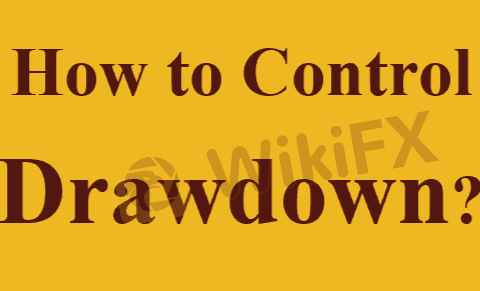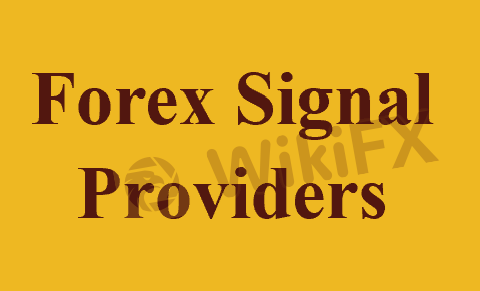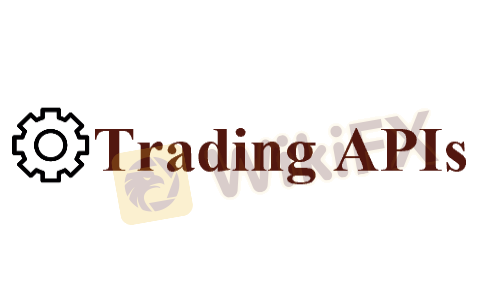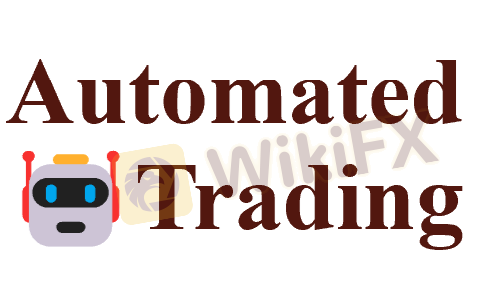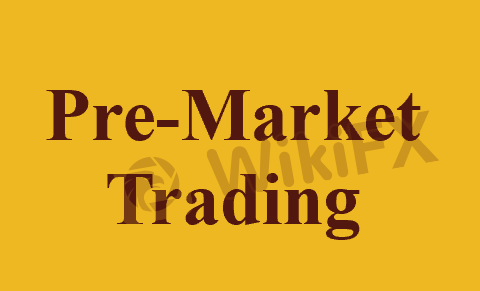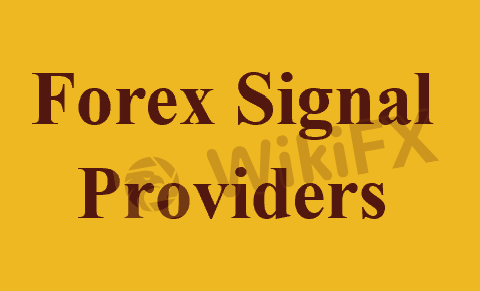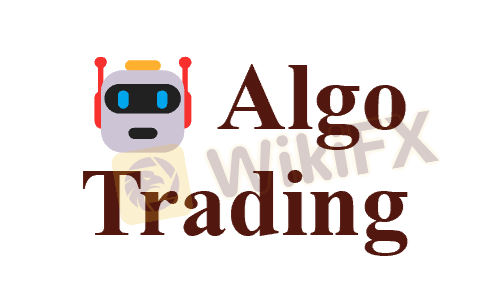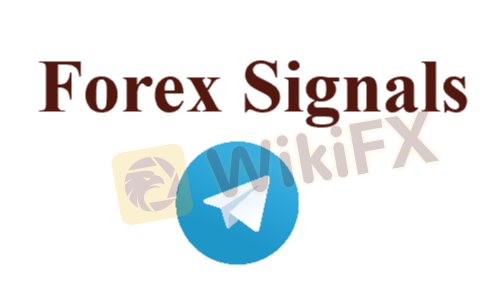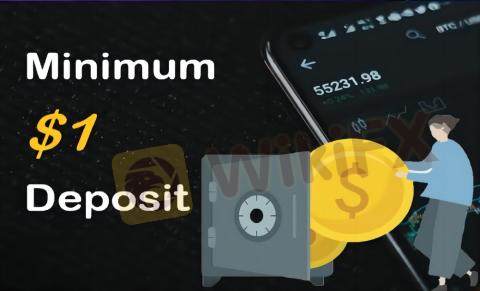As the world of finance and investments revolutionizes at a rapid pace, high-frequency trading (HFT) has emerged as a potent strategy for traders worldwide. This article aims to provide an in-depth look into top-tier brokers that offer robust platforms for high-frequency trading in 2024.
Furthermore, we will delve deep into understanding the intricate world of high-frequency trading, exploring its history, legality, pros & cons, workings, and factors to consider when selecting a suitable HFT broker.
We will also address fundamental questions such as whether it's possible to make money with HFT and the best strategies to adopt in this fast-paced trading environment. Whether you're an experienced trader looking to up your game or a novice exploring your options, stay with us as we navigate the intriguing route of high-frequency trading.
Best High-Frequency Trading Brokers
√ Both ASIC & CYSEC Regulated Financial Providers offer You Excellent Security.
√ 24/7 Professional and Multilingual Customer Support Easy to Reach.
√ A Stringently Regulated Broker, Reliable and Safe to Trade With, The Choice of Over 3500,000 Clients from Over 190 Countries.
√ Quick & Easy to Start Your Real Trading by Funding As Low As 5 USD, Lower & Friendlier Cost Structure Available, Advanced Trading Platforms & Tools Drive You Succeed into the Forex World.
√ Globally Licensed and Regulated by FCA & CYSEC, Offering Great Reliability.
√ Advanced Trading Platforms Offering of Ultra-Low Spreads, Starting from 0 pips.
more
Comparison of Best High-Frequency Trading Brokers
Forex Broker
License
Minimum Spread
Maximum Leverage
Minimum Deposit
Open account
Details
Compare
Best High-Frequency Trading Brokers Reviewed
1. IC Markets
 |
⭐⭐⭐⭐⭐ |
| Min Deposit | $200 |
| Tradable Instruments | 1780+ |
| Demo Account | Yes |
| Costs | From 0.6 pips & no commission (Std) |
| Trading Platforms | MT4, MT5, cTrader |
| Customer Support | 24/7 live chat, phone, email |
IC Markets is a reputable broker known worldwide for its comprehensive forex offerings and broad market access. Its advanced technology infrastructure and superior liquidity make it a popular choice for high-frequency traders. It prides itself on delivering low latency, fast execution speeds, and competitive pricing.
2. XM
 |
⭐⭐⭐⭐⭐ |
| Min Deposit | $5 |
| Tradable Instruments | 1000+ |
| Demo Account | Yes |
| Costs | From 1 pip & commission-free (Std) |
| Trading Platforms | MT4, MT5, XM WebTrader |
| Customer Support | 24/7 live chat, phone, email |
| Bonus | Up to $2,000 |
is a multi-asset broker that provides clients access to a wide range of financial instruments. With its commitment to transparent pricing, cutting-edge technology, and robust trading platforms, can be an optimal choice for those engaged in high-frequency trading.
3. FXTM
 |
⭐⭐⭐⭐⭐ |
| Min Deposit | $10 |
| Demo Account | Yes |
| Account Types | Ultra-low Spread account, Zero-commission account, Micro account |
| Trading Platforms | MT4, MT5 |
| Customer Support | 24/5 live chat, phone, email |
Known for its investor-centric approach, offers a range of trading instruments and platforms. Offering a desirable mix of competitive pricing, vast market access, and state-of-the-art technology, is frequently chosen by high-frequency traders looking for efficiency and reliability.
4. Pepperstone
 |
⭐⭐⭐⭐⭐ |
| Min Deposit | $200 |
| Execution Speed | 30ms |
| Tradable Instruments | 1000+ |
| Demo Account | Yes |
| Costs | Average 1.1 pips & commission-free (Std) |
| Trading Platforms | Trading View, MT4, MT5, cTrader |
| Customer Support | 24/5 live chat, phone, email |
stands out with its award-winning execution speeds and low-cost pricing structure. By providing fast and reliable trading platforms, various trading instruments, and real-time market data feeds, caters well for high-frequency traders' needs.
5. FOREX.com
 |
⭐⭐⭐⭐⭐ |
| Min Deposit | $100 |
| Demo Account | Yes |
| Costs | From 0.018 pips (EUR/USD) |
| Trading Platforms | Forex.com, MT5 |
| Customer Support | 24h live chat, phone, email |
| Bonus | Up to $5,000 |
Foremost in forex trading, FOREX.com offers an impressive array of currency pairs and an effective trading platform. With its comprehensive real-time market data, streamlined execution, and low transaction costs, the platform serves high-frequency traders well.
6. FP Markets
 |
⭐⭐⭐⭐ |
| Min Deposit | $100 AUD or equivalent |
| Demo Account | Yes |
| Costs | From 1.0 pips & commission-free (Std) |
| Trading Platforms | MT4, MT5, WebTrader, Mobile App |
| Customer Support | 24/7 live chat, phone, email |
With roots dating back to 2005, has gained a robust reputation for providing seamless access to the forex and CFD markets. High-frequency traders may appreciate its blend of powerful trading platforms, quick execution speeds, and transparent pricing.
7. FxPro
 |
⭐⭐⭐⭐ |
| Min Deposit | $100 |
| Demo Account | Yes |
| Costs | From 1.2 pips & commission-free (Std) |
| Trading Platforms | MT4, MT5, cTrader, FxPro Trading Platform |
| Customer Support | 24/5 live chat, phone, email |
features a technologically proficient platform with access to multiple markets. Its focus on providing a high-speed trading environment, combined with advanced trading tools and real-time data, makes an appealing option for high-frequency traders.
High-Frequency Trading Brokers FAQs
What is High-Frequency Trading?
High-Frequency Trading (HFT) is a method used in algorithmic trading to execute large volumes of trades extremely quickly across multiple markets and decision parameters, based on pre-set trading instructions. Leveraging powerful computing technology, HFT processes and performs trades in microseconds, much faster than humans could manually.
HFT initiatives are intended to capitalize on even the smallest price discrepancies in financial markets. In essence, HFT attempts to use speed and sophisticated analytics as a competitive advantage to make a profit. These strategies often involve trading large volumes and holding positions for very short periods, making them vulnerable to very small price changes.
High-frequency traders significantly contribute to the liquidity and efficiency of markets. However, they have also been criticized for creating instability in markets and unjustly profiting at the expense of other investors.
History of High-Frequency Trading
High-Frequency Trading (HFT) is a relatively recent development in the financial world and its inception can be traced back to the 1980s with the advent of electronic trading. As the electronic dealing of securities became more prevalent, traders began realizing that they could use computing power to execute trades more efficiently and faster than ever before.
However, HFT as we know it today took off in the late 1990s and early 2000s. It was during this period that technological advances in computing and communication networks, as well as significant changes in financial market regulations, allowed for High-Frequency Trading to truly flourish. The U.S. Securities and Exchange Commission (SEC) authorized electronic exchanges in 1998, and soon the traditional trading floors were replaced by automated trading systems.
HFT reached its peak between 2010 and 2012, and during this time high-frequency trading accounted for approximately 60-73% of all U.S. equity trading volume.
| Timeline | |
|---|---|
| 1983 | NASDAQ introduces the first fully electronic stock exchange |
| 1998 | The Securities and Exchange Commission (SEC) approves the use of direct market access (DMA), which allows HFT firms to place orders directly with exchanges. |
| 2005 | The first HFT firms began to emerge. |
| 2007 | HFT accounts for about 10% of all trading volume on US exchanges. |
| 2009 | HFT accounts for about 50% of all trading volume on US exchanges. |
| 2010 | The “Flash Crash” occurs, in which the Dow Jones Industrial Average plummets by over 1,000 points in a matter of minutes. HFT is blamed for playing a role in the crash. |
| 2011 | The SEC introduced new regulations designed to curb the risks associated with HFT. |
| 2014 | The SEC conducts a pilot program to test the feasibility of a “circuit breaker” that would halt trading if the market falls by a certain percentage. |
| 2023 | HFT accounts for about 70% of all trading volume on US exchanges. |
Over the years, HFT has been viewed both as a force that contributes to useful market liquidity and efficiency and also as a potential cause of market instability. HFT has been a subject of intense debate and regulatory scrutiny, leading to reforms like the EU's Markets in Financial Instruments Directive (MiFID II), which is intended to increase transparency and reduce the likelihood of market manipulation.
Today, despite some controversy and regulatory challenges, High-Frequency Trading plays a significant role in global markets, contributing to overall market liquidity, tighter spreads, and more efficient pricing. However, the high cost of necessary technology and infrastructure makes it accessible primarily to institutional operators and professional traders.
Is High-Frequency Trading Legal?
Yes, High-Frequency Trading (HFT) itself is legal. It's a method of trading that uses advanced technology to get information and execute trades in milliseconds. Many HFT firms are important market makers, continuously offering to buy or sell securities, which contributes to liquidity in the markets.
However, while high-frequency trading is legal, some practices associated with it can lead to illegitimate activity and have therefore been regulated or outlawed. Practices such as quote stuffing, spoofing, or layering, where a trader floods the market with orders they don't intend to execute to create an illusion of increased interest in security, are prohibited.
Over the years, regulatory bodies around the world have introduced rules to increase transparency and fair play in markets where HFT firms operate. For example, the U.S. Securities and Exchange Commission (SEC), the Commodity Futures Trading Commission (CFTC), and Financial Industry Regulatory Authority (FINRA) in the United States, and the European Securities and Markets Authority (ESMA) in the European Union have all taken steps to oversee and regulate activities of high-frequency traders.
Therefore, while HFT itself is legal, it's important for firms engaging in high-frequency trading to ensure they are compliant with all relevant regulations and trading laws.
Pros & Cons of High-Frequency Trading
High-Frequency Trading (HFT) comes with its own set of advantages and disadvantages.
| Pros | Cons |
|---|---|
| √ Increased Liquidity | × Market Manipulation |
| √ Market Efficiency | × Systemic Risk |
| √ Profit Opportunities | × Unfair to Retail Investors |
Pros
Increased Liquidity: HFT contributes significantly to market liquidity as it involves the execution of a high number of orders.
Market Efficiency: HFT helps in the accurate pricing of securities in real-time, reducing the cost of trading and improving market efficiency.
Profit Opportunities: The speed and high volume of HFT can potentially lead to substantial profit opportunities.
Cons
Market Manipulation: Some HFT strategies can be seen as forms of market manipulation. Practices like quote stuffing where the market is flooded with orders that are not intended to be executed can cause unfair price movements.
Systemic Risk: Because of its high-speed nature, errors in HFT algorithms can cause drastic losses in a very short period, sometimes leading to significant market events (like the “Flash Crash” in 2010).
Unfair to Retail Investors: Some argue that HFT firms have an unfair advantage as they can afford the sophisticated technology required for this kind of trading, whereas retail investors cannot.
The good news is that policies and regulations have been developed in many regions to reduce the potential negative impacts of HFT and ensure a level playing field for all market participants.
How High-Frequency Trading Works?
High-Frequency Trading (HFT) works by using sophisticated algorithms and powerful computer technology to execute a large number of orders in fractions of a second. Here's a simple breakdown of how the process works:
Market Data Analysis: HFT firms start by setting up systems to receive real-time market data from exchanges. The incoming data includes information about current bid-ask quotes, last traded price, volume traded, and other market-moving information.
Use of Algorithms: The HFT firms then use algorithms to analyze this stream of data. The algorithms have pre-set criteria to identify trading opportunities that can generate profits. These criteria might be based on small price differences across exchanges (arbitrage), detecting and reacting to market trends, or other strategies.
Order Placement: Once an opportunity is identified, the HFT systems can create orders and send them to the exchange. This happens in microseconds (millionth of a second). The aim is to be the first to seize the opportunity.
Order Execution: If the orders are matched at the exchange, the trades are executed. The objective is to hold positions for a very short time to minimize risk and to take advantage of very small movements in stock prices.
Continual Process: The process of analyzing data and executing orders is continual throughout the trading day.
The success of HFT depends on the speed of execution, which leads to heavy investments in state-of-the-art technology, high-speed connections, and colocation (setting up servers as close as possible to the exchange's data centre) to minimize latency. As such, HFT is typically done by institutional traders or large hedge funds, rather than individual retail traders.
How to Start High-Frequency Trading?
Obtain Necessary Knowledge: Make sure to educate yourself about HFT and its strategies. This would include understanding how financial markets work, key industry jargon, basic trading strategies, risks involved, etc. There are many books, online courses, and other educational resources to learn from.
Get the Required Technology: HFT relies heavily on the ability to process large volumes of data at high speed. This requires powerful hardware, high-speed internet, and cutting-edge software capable of running algorithms that execute trades.
Writing the Algorithm: The heart of HFT lies in its proprietary algorithms. These algorithms are what allow high-frequency traders to execute trades at such high speed and volume. Understanding programming and coding languages such as Python or C++ is crucial.
Choosing a Broker: You will need access to a broker or a trading venue where you can place your trades. Some trading venues might provide better access for high-speed trading than others, so it's important to choose wisely.
Backtesting: Test your strategies using historical data before deploying any capital. Backtesting can help identify potential issues and optimize your strategy before it goes live.
Risk Management: Even though high-frequency trading involves holding positions for a very short time, the potential for large losses still exists. Having a robust risk management strategy in place is crucial.
Compliance with Regulations: Ensure that you are fully aware of and comply with all relevant regulatory requirements, trading regulations, and market rules that apply to HFT in your region.
Overall, HFT requires both a significant investment in technology and a high degree of expertise in financial markets and computer programming. Be aware that HFT can be risky and is not suitable for everyone.
Factors to Consider When Choosing a High-Frequency Trading Broker
Low Transaction Costs
As high-frequency trading involves a large volume of trades, it's critical to choose a broker that offers low transaction costs. High transaction costs can significantly eat into the potential profit margins.
Reliable and Fast Execution Speeds
HFT relies heavily on the speed of trades. Therefore, select a broker that can reliably execute orders at a high speed. The pace at which your broker can execute trades can influence your HFT success.
Robust Trading Infrastructure
The trading infrastructure of the broker needs to be efficient and reliable. The infrastructure should be capable of supporting high volumes of trade and withstand market volatility without interruptions.
High-Quality Data Feeds
High-frequency trading relies on real-time market information. Therefore, the quality of data feeds provided by the broker plays a pivotal role in improving your HFT strategy. The broker should provide comprehensive and real-time market data to react swiftly to market changes.
Each of these points plays an essential role in executing successful HFT strategies. It is worth investing time to research and select a broker that aligns well with your high-frequency trading needs.
Can You Make Money with High-Frequency Trading?
Yes, it is possible to make money with High-Frequency Trading (HFT), but it's not easily accessible or suitable for everyone. HFT is utilized chiefly by large institutional investors, including investment banks and hedge funds that have the resources to invest in the advanced infrastructure necessary to conduct high-frequency trades.
HFT strategies often involve holding positions for very short timeframes, and profits are usually from very small price movements but large volumes of trades. These profits can add up because of the high frequency and volume of transactions.
In conclusion, while it is possible to make money with HFT, it's a complex field that's more suited for institutional traders and those with significant resources, technical knowledge, and risk tolerance. As with all forms of trading, it should not be undertaken without a clear understanding of the risks involved.
What are the Best High-Frequency Trading Strategies?
There are several strategies used in High-Frequency Trading (HFT).
Market Making
In this type of HFT strategy, traders provide liquidity to the market by both buying and selling a particular financial instrument, profiting from the bid-ask spread. They aim to profit from a large number of trades rather than large profit margins on individual trades.
Arbitrage
This involves profiting from price inefficiencies across different markets or securities. e.g.
Spatial arbitrage involves buying a security on one exchange where its price is low and selling it on another where its price is high, simultaneously, to profit from the price difference.
Statistical arbitrage involves creating a portfolio of long and short positions in securities, which are historically statistically correlated. When their prices diverge, traders will go long for underpriced security and short the overpriced one.
Tick Data Trading
Some HFT strategies analyze every single change in market data (known as 'ticks'), no matter how small, to identify trading opportunities. High-frequency traders often have access to the raw market data via direct data feeds, allowing them to act on changes faster than through aggregated data.
News-Based Trading
This strategy analyzes news events and executes trades within microseconds of the news being released. This requires sophisticated natural language processing algorithms that can interpret and react to news releases.
Momentum Ignition
This strategy involves initiating a series of trades to create a rapid price movement in a particular direction, usually to prompt other traders to also trade that security, after which the HFT trader will exit the position, profiting from the price movement it helped create.
Each strategy has its own set of risks and it's important to have a thorough understanding of these strategies and the resources and knowledge required to execute them. Also, some strategies like Momentum Ignition, if not conducted properly, can fall into market manipulation, which is illegal.
Final Thoughts
High-frequency trading (HFT) continues to be a pertinent topic in today's rapidly advancing technological landscape. Serving as an influential and groundbreaking practice in the financial world, HFT is not only embraced by large institutions for its efficient strategies but is also under the scanner for potential market disruptions.
As we've explored the best HFT brokers for 2024, understood what HFT is, its history, legality, and workings, and considered the best strategies in use, it is clear that HFT is a complex field with significant pros and cons.
If armed with high-level resources and ultimate risk tolerance, it presents the potential for substantial profit. However, for anyone considering this path, it's fundamental to learn thoroughly, obtain relevant technical knowledge, and adhere to the regulatory landscape. This will ensure that the pursuit of HFT results in success and effective contribution to the markets liquidity and efficiency.
Disclaimer
Trading Forex (foreign exchange) carries a high level of risk, and may not be suitable for all investors. Before deciding to trade foreign exchange, you should carefully consider your investment objectives, level of experience, risk appetite, and the possibility of incurring losses. There is a possibility that you may sustain a loss of some or all of your initial investment and therefore you should not invest money that you cannot afford to lose. You should be aware of all the risks associated with foreign exchange trading and seek advice from an independent financial advisor if you have any doubts.
You Also Like
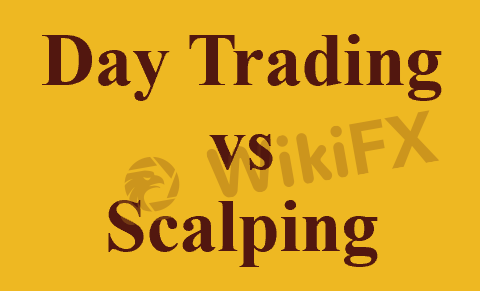
Forex Day Trading VS Forex Scalping: Which One to Choose?
Unravel the clash of Forex day trading and scalping - grasp their tactics, track differences, and tailor your trade.

How to Hedge Forex Positions? Some Relevant Strategies to Share.
Dive into Forex hedging strategies - reducing risk, seizing opportunities and securing robust trading profits.
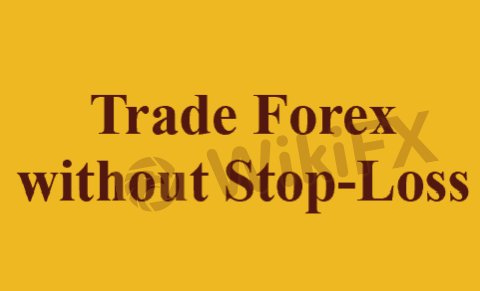
Can I Trade Forex without Stop-Loss? Here Lets’ Discuss
Start Forex trading without stop-loss - understand how it works, explore other options and possible risks.

Forex Market Hours: What is the Best Time to Trade Forex?
Master the clock of Forex trading - optimize profits by knowing the best trading times globally!



